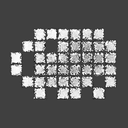My new standalone granular sampling synth, made entirely in PD and running on a Bela in a custom box. The patches need some cleanup, so I'll be updating them over the coming weeks but feel free to have a look (and tell me how to improve them): https://github.com/yannseznec/Granular-Sampler
-
EN-1 granular sampling synthesizer
-
@yannseznec nice instrument (and box)
 would it be difficult to build something like that (or pure data instruments in general) on the hardware side without knowing a lot about electronics? especially connecting potis and switches to a bela/rasperry/arduino?
would it be difficult to build something like that (or pure data instruments in general) on the hardware side without knowing a lot about electronics? especially connecting potis and switches to a bela/rasperry/arduino? -
How does one receive input from external devices like knobs and switches?
-
@Jona it's hard to gauge how difficult something would be, that can be very subjective! However I would say that connecting some pots and switches to a micro controller is relatively straightforward. In my teaching experience I've noticed that the thing that people find most challenging is soldering components and figuring out the best logistical way to connect things and then mount them in a nice way. The soldering is a major hurdle and there's not much way around it, apart from lots of practice!
But as a word of encouragement: I personally don't have any formal electronics background at all, I learned everything from Internet forums and books and things. I would highly suggest Handmade Electronic Music as a place to start, it assumes you know absolutely nothing, is a very easy read, and gets you started making really amazing (and low cost) noisemaking things. If you can learn the basics of how a potentiometer and switch work it's not very much more work to get it connected to a Bela/raspi/arduino. https://www.nicolascollins.com/handmade.htm
-
@Joseph-Mikkelson in this case, you can connect switches and knobs directly to the Bela board, which has dedicated inputs for any type of digital or analog input. These can even run at signal rate for extremely accurate input, if you like!
Then when you install a PD patch on the Bela platform you can access the analog inputs (knobs) using the adc~ object - the 8 available analog inputs come up as adc~ numbers 3 to 10. Digital inputs (buttons) are accessed slightly differently, using a receive object (like "r Bela_digitalIn13).
There are other ways you can do this too, whether or not you use a Bela. For a Raspberry Pi, for example, I've found it easier to connect knobs/switches/sensors to something like a Teensy, which I code to turn into a USB MIDI controller, which is then connected to the Raspberry Pi which is running the PD patch (using ctlin and notein objects).
-
@yannseznec thanks for the information.
-
This is very nice indeed...
|] [] |.| ][|-| -- http://soundcloud.com/domxh



